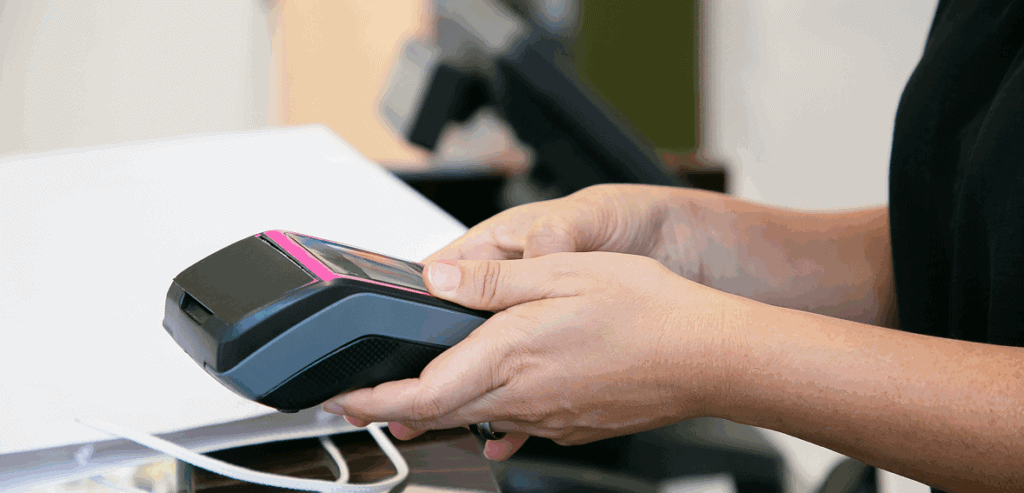
By Georgia Robinson May 7, 2025
For local retailers and restaurants, accepting card payments is essential for staying competitive and meeting customer expectations. But along with the convenience of digital transactions comes a responsibility to protect sensitive cardholder data. That responsibility falls under the umbrella of PCI compliance.
PCI compliance may sound complex or technical, but it is a crucial part of keeping your business secure, trustworthy, and operational. Whether you run a neighborhood bakery, a clothing boutique, or a busy family restaurant, understanding the basics of PCI compliance helps you safeguard customer information and avoid costly penalties.
What Is PCI Compliance?
PCI compliance refers to the Payment Card Industry Data Security Standard (PCI DSS), a set of security requirements designed to ensure that businesses accepting credit and debit cards handle cardholder data safely.
Established by the PCI Security Standards Council — founded by major card brands like Visa, Mastercard, and American Express — PCI DSS is not a law but is contractually required by banks and payment processors.
Why It Matters
If your business accepts card payments, PCI compliance is not optional. Failing to meet PCI standards can result in:
- Hefty fines from payment processors
- Increased risk of data breaches
- Loss of customer trust
- Possible termination of your ability to process card payments
PCI compliance protects not only your customers but also your business from the consequences of data theft and fraud.
Who Needs to Be PCI Compliant?

The short answer is: any business that accepts credit or debit cards. This includes large corporations, mid-sized franchises, and especially small, independent retailers and restaurants.
Even if you only process a few transactions a day, you are still responsible for complying with PCI standards.
Merchant Levels
PCI compliance is categorized by merchant levels, which are based on the number of card transactions your business processes annually. The higher the volume, the more rigorous the requirements.
For most local businesses:
- Level 4 merchants: Fewer than 20,000 e-commerce transactions or up to 1 million total transactions per year
Most retailers and restaurants fall into this category and are required to complete a Self-Assessment Questionnaire (SAQ) and possibly undergo quarterly scans, depending on how they process payments.
Key PCI Compliance Requirements
The PCI DSS framework includes 12 core requirements, grouped under six major goals. These requirements cover everything from securing your point-of-sale system to restricting access to customer data.
While small businesses are not required to implement all technical measures designed for large enterprises, they must still uphold core data protection practices.
Build and Maintain a Secure Network
- Install and maintain a firewall to protect cardholder data
- Avoid using vendor-supplied default passwords for systems and software
Protect Cardholder Data
- Protect stored cardholder data (if applicable)
- Encrypt transmission of cardholder data across open, public networks
Maintain a Vulnerability Management Program
- Use antivirus software and keep it updated
- Develop secure systems and applications with regular updates
Implement Strong Access Control Measures
- Restrict access to cardholder data on a need-to-know basis
- Assign unique IDs to anyone with computer access
- Restrict physical access to cardholder data
Monitor and Test Networks
- Track and monitor all access to network resources and cardholder data
- Test security systems and processes regularly
Maintain an Information Security Policy
- Create and maintain a security policy that covers all staff and systems
Common Compliance Challenges for Local Businesses
Many small retailers and restaurants struggle with PCI compliance because of limited time, knowledge, or resources. However, ignoring compliance requirements can be more costly in the long run.
Understanding where the challenges lie can help you avoid common pitfalls and implement solutions that are realistic and sustainable.
Outdated POS Systems

Older point-of-sale systems may not support secure encryption or tokenization. Upgrading to a modern, PCI-compliant POS is one of the best investments you can make for both security and efficiency.
Storing Card Data Unnecessarily
Some businesses store card information for future orders or customer convenience without realizing that this requires advanced data protection. Unless absolutely necessary, avoid storing card data to reduce risk and compliance burden.
Lack of Staff Training
PCI compliance is not just about technology. Human error can lead to data breaches. Ensuring that your team understands best practices for handling payments and identifying phishing or fraud attempts is essential.
Skipping the SAQ
Some businesses are unaware that they must complete a Self-Assessment Questionnaire annually. Skipping this step can result in fines or higher processing fees from your payment provider.
How to Achieve and Maintain PCI Compliance
Achieving PCI compliance does not have to be complicated. With a structured approach and the right support, most local businesses can meet the required standards without significant disruption.
Here’s a step-by-step guide to help retailers and restaurants get started.
Step 1: Identify Your Compliance Level
Start by determining which PCI level your business falls under. This will dictate the steps you need to take. Most small businesses fall into Level 4, which requires a Self-Assessment Questionnaire and possibly quarterly scans if you process payments over the internet.
Step 2: Complete the Self-Assessment Questionnaire (SAQ)
The SAQ is a set of yes/no questions that evaluate how your business handles card data. There are several versions of the SAQ, depending on your setup (for example, whether you use a payment terminal, a web-based checkout, or both).
Your payment processor can guide you in choosing the correct SAQ version.
Step 3: Conduct a Network Scan (if applicable)
If your business processes card data through the internet (such as via an e-commerce site), you may need to conduct quarterly vulnerability scans. These are typically performed by Approved Scanning Vendors (ASVs) recognized by the PCI Council.
Step 4: Remediate Issues
If the SAQ or scan reveals gaps in your security, take corrective action. This might involve updating software, installing antivirus programs, reconfiguring your network, or changing password protocols.
Step 5: Submit Documentation
Once complete, submit your SAQ and scan results (if required) to your payment processor. Keep records of your compliance efforts in case of audits or future requests.
Working with Payment Processors and Vendors
Your payment processor plays a key role in your PCI compliance journey. Reputable processors offer tools, support, and education to help you stay compliant.
Some POS vendors also bundle PCI support as part of their subscription or service package, which can simplify the process significantly.
What to Ask Your Provider
- Do you offer PCI compliance assistance or a guided SAQ?
- Is my POS system PCI compliant by design?
- What fees do you charge if I am non-compliant?
- Can I access vulnerability scans or reports through your platform?
Having these conversations ensures that you are not caught off guard by hidden requirements or penalties.
Best Practices for Everyday Compliance
Beyond meeting formal requirements, there are simple, everyday habits that reinforce your PCI compliance and create a culture of security in your business. These practices reduce your risk of breaches and help you stay in good standing.
Use Strong Passwords and Two-Factor Authentication
Avoid default or weak passwords for all systems connected to payment processing. When possible, enable two-factor authentication for added security.
Limit Access to Cardholder Data
Only authorized personnel should be able to access payment systems. Do not share passwords or leave terminals unattended while logged in.
Keep Software and Devices Updated
Install updates regularly for your POS system, firewall, antivirus software, and operating systems. Updates often include security patches that fix vulnerabilities.
Secure Your Wi-Fi Network
Use a dedicated, password-protected Wi-Fi network for payment systems. Do not process payments over public or shared networks.
Regularly Back Up Data
While PCI compliance discourages storing cardholder data, other business data (like inventory and transaction records) should be backed up securely to protect against loss or ransomware attacks.
What Happens If You’re Not Compliant?
The consequences of non-compliance can be severe. While small businesses may assume they are not targets for cybercrime, data breaches do happen — and when they do, the fallout is expensive and damaging.
Financial Penalties
Payment processors may charge monthly non-compliance fees until the issue is resolved. If a breach occurs, fines from card networks can range from thousands to hundreds of thousands of dollars.
Increased Processing Fees
Non-compliant businesses may be moved to high-risk merchant categories, which come with increased rates and stricter oversight.
Loss of Customer Trust
A single security incident can damage your reputation. Customers expect businesses to handle their payment data with care. Any breach or suspicious activity could result in lost business and negative reviews.
Conclusion
PCI compliance may seem like a technical burden at first, but it is a vital part of running a responsible and successful local retail or restaurant business in 2025. By understanding the basics, working with your payment partners, and following good security practices, you can meet compliance requirements with confidence. Most importantly, you protect your customers — and your livelihood — from the growing risks of data breaches and fraud.